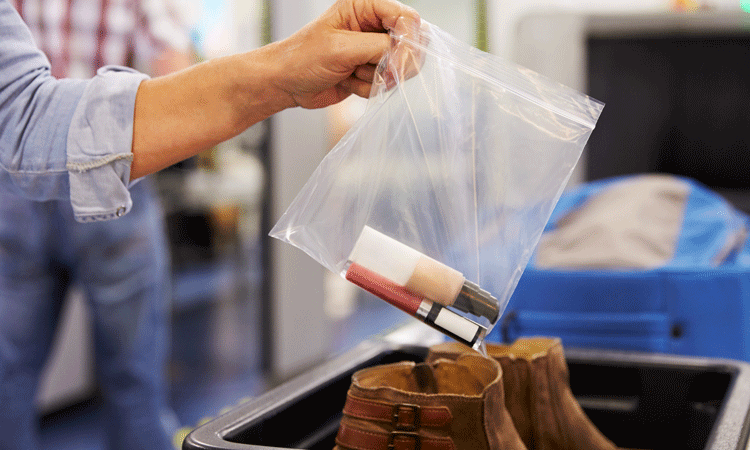Sustainable operations: Bristol Airport’s decade of transformation
- Like
- Digg
- Del
- Tumblr
- VKontakte
- Buffer
- Love This
- Odnoklassniki
- Meneame
- Blogger
- Amazon
- Yahoo Mail
- Gmail
- AOL
- Newsvine
- HackerNews
- Evernote
- MySpace
- Mail.ru
- Viadeo
- Line
- Comments
- Yummly
- SMS
- Viber
- Telegram
- Subscribe
- Skype
- Facebook Messenger
- Kakao
- LiveJournal
- Yammer
- Edgar
- Fintel
- Mix
- Instapaper
- Copy Link
Posted: 27 November 2019 | Simon Earles - Bristol Airport | No comments yet
Simon Earles, Planning and Sustainability Director at Bristol Airport, details how the regional airport has continued making environmentally-friendly decisions as operations adapt to handle the increasing passenger traffic.


Bristol Airport has been through a transformational change over the last decade. Serving South West England and South Wales, passengers from our region have benefited from an ever-increasing offering of destinations and flight timings, plus customer offerings and service standards.
Our passenger numbers have increased from 6.3 million per year in 2008 to nearly nine million in 2018. Throughout this, we have been reducing our impact on the environment and mitigating our operations both onsite and within the local communities. We are especially proud that our community fund has contributed over £1 million to local groups and provided grants for noise insulation since its inception, including £187,000 in 2019 alone.
Carbon emissions – the story so far
Growth aspirations within aviation must be balanced by becoming more sustainable, locally mitigated and more efficient. That is a fundamental part of our licence to grow.
We will achieve this through a comprehensive approach to monitoring and reducing both energy demand and use across the airport, whilst seeking to limit emissions. Reduction in our demand for energy, switching to lower carbon energy and off-setting any residual emissions will get us to carbon neutrality by 2025. The success of this is measured through reducing per passenger carbon emissions and we have already taken significant steps forward to help achieve this: The CO2 footprint for a Bristol Airport passenger now stands at 0.69kg, a huge reduction from 1.2kg in 2008.
Efforts to improve efficiency across the airport campus have seen waste to landfill reduced from over 1,000 tonnes in 2008 to 0.51 tonnes in 2018. Onsite energy demand is produced by over five per cent solar power and we continue to see annual reductions in our energy usage as an airport. Significant areas of terminal roofing are now identified for further solar panels, an investment out of the public eye but one that makes a notable difference. Green energy tariffs will be selected for the remaining energy demand.
Bristol Airport has achieved the first level of certification in the Airport Carbon Accreditation (ACA) scheme during 2015, 2016 and 2017. In June 2018, Bristol Airport gained ACA Stage 2 Certification of the four-stage programme by successfully reducing its carbon emissions year on year.
Our strategy is simple and starts with finding ways to cut our energy use, after which we look for ways to use energy more efficiently and invest in technology that can generate renewable energy. In the last few years we have implemented measures to reduce energy use through chiller plant improvements, enhanced metering solutions and energy management campaigns. We have invested in new and more energy-efficient baggage handling systems and installed further low-energy LED lighting across the airport campus, meaning that 95 per cent of all lighting in our airport has been upgraded.


Sustainable growth to 2050
We’ve taken our responsibility for creating a sustainable future for our business and region seriously and have made continuous improvements to reduce our carbon footprint. Bristol Airport recently launched its roadmap to carbon neutrality and accelerated its target to 2025, five years earlier than previously committed. It is a target that sets us years ahead of the region that we serve.
We were also a founding signatory to ACI Europe’s recent landmark commitment to net-zero carbon emissions by 2050. This challenging target for the industry cannot be underestimated, but is one that must be met.
Improvements to aircraft and engine technology, many of which are designed and developed in our region, continue to make positive progress, including more fuel efficient and quieter aircraft. The maximum noise level recorded on our site was 100.4LMAX a decade ago but now stands at 82.9LMAX. Welcoming and incentivising aircraft such as the Airbus A320NEO and Boeing 787 Dreamliner to our airline customer’s fleets certainly helps with this, and with orders in place for more of these aircraft, the benefits will only continue.
A range of actions are taking place to reduce the carbon intensity of the airport infrastructure. For example, Fixed Electrical Ground Power units have been installed in five new aircraft stands. From the passenger perspective, our trays in security are now made from 100 per cent recycled materials and the one million plastic bags a year that are used for liquids in security are made from a transparent compostable material and will biodegrade within six to eight weeks.
Most significantly for Bristol Airport, this year will see the publication of our Sustainable Growth Strategy which will further reinforce our commitment to continuous improvement.
Operating under the policy sphere in the UK
The UK government recently consulted on a new long-term plan for aviation out to the year 2050. The Aviation Strategy should set the framework for sustainable UK airport growth over the coming decades, building on a fantastic track record of improving connectivity, passenger choice and safety.
Bristol Airport’s response highlighted that passengers increasingly want more efficient and more sustainable surface transport options for travel to and from airports. Greater government support for improved surface access to airports will play a vital role in reducing aviation’s carbon footprint as well as improving the passenger experience, particularly for those outside the South East.
With strong international measures now in place to offset carbon emissions through the CORSIA scheme, which our airline partners are robustly supporting and committed to, the industry already has significant international frameworks for addressing the impacts at this crucial time.
Key to this will be government investment in research and design, allowing next-generation aircraft propulsion technology to be developed at pace. The Aerospace Sector Deal announced in 2018 energised the research and development of sustainable aircraft technology. The equipment manufactured by aircraft manufacturers and the wider aerospace supply chain directly affects airports’ sustainability efforts downstream. In this regard the entire aviation sector’s efforts are interlinked. The Aerospace Sector Deal must be built upon, as recommended by the Committee on Climate Change.
Sustainably securing the future of aviation
Bristol Airport has been hard at work over the last decade, offering residents and businesses in the South West better connectivity. We have already made strides in making operations more sustainable and efficient, and with bold new plans already published and more in the pipeline, we are clearly on the right heading. As we look to the end of the next decade, we will have been operating as carbon neutral for several years, we will have made leaps and bounds in developing the region’s public transport, and we will continue with confidence that we are a world-leading sustainable regional airport.
Biography
Simon Earles, Planning and Sustainability Director, Bristol Airport, previously worked at Heathrow, where he was most recently Planning and Policy Director. Prior to this, he was responsible for surface access to the airport, leading on projects such as Crossrail, Western Rail Access and HS2. Earles brings over 16 years of experience in the aviation sector, having also worked for Luton Airport, and is a qualified transport planner.
Issue
Related topics
Airport development, Emissions, Engineering, Sustainable development

















